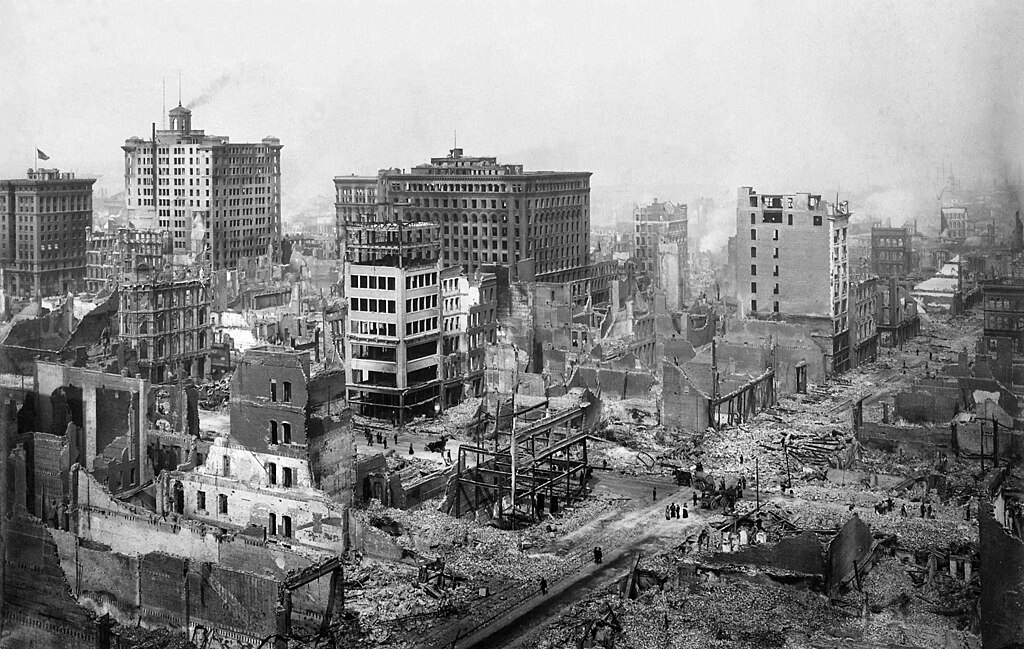At 5:12 AM on April 18, 1906, San Francisco was violently jolted awake by a magnitude 7.9 earthquake. The quake, centered along the San Andreas Fault, unleashed catastrophic destruction across Northern California and ignited fires that would rage for days. In the end, more than 3,000 lives were lost, and over 80% of San Francisco was reduced to rubble and ash.
The earthquake’s epicenter was near San Francisco, but its effects were felt as far north as Eureka, south to the Salinas Valley, and east into Nevada. A violent foreshock shook the region seconds before the main quake struck, lasting approximately 42 seconds. During that short time, buildings crumbled, gas lines burst, and the city’s infrastructure collapsed.
The San Andreas Fault, which slices through California, shifted dramatically during the quake, with some areas experiencing displacements of up to 28 feet, meaning that the ground moved horizontally by as much as 28 feet in some places. This sudden release of tension in the Earth’s crust was enough to rupture nearly 300 miles of the fault line, triggering one of American history’s most significant geologic events.
While the quake inflicted significant structural damage, the following fires were even more destructive. Broken gas mains ignited across the city. With water lines ruptured, firefighters were powerless. Over 30 fires burned uncontrollably for three days, consuming 490 city blocks and destroying 25,000 buildings. The disaster caused property losses exceeding $400 million—equivalent to over $10 billion today.
The chaos forced over 250,000 residents—more than half of San Francisco’s population at the time—into refugee camps and makeshift shelters in Golden Gate Park, Presidio, and other open areas. Relief efforts began almost immediately, with the entire community coming together. Military troops provided aid, enforced order, and established food and medical stations. Despite initial efforts to downplay the disaster to protect the city’s business interests, the 1906 earthquake ultimately spurred nationwide awareness of seismic risks and the need for urban planning and building regulations.
San Francisco rose from the ashes. By 1915, the city had rebuilt enough to host the Panama–Pacific International Exposition, symbolizing its rebirth.

